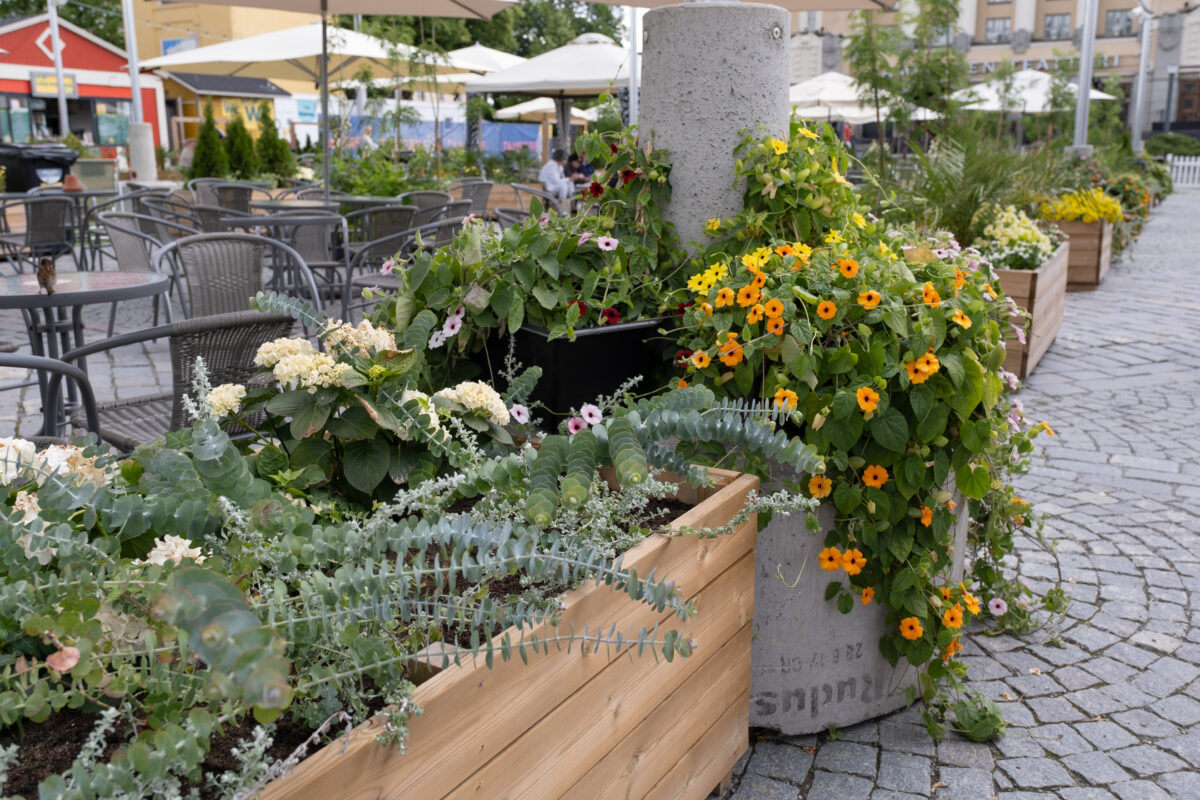Our website uses cookies. We analyze usage statistics collected based on them and they may be used for targeting advertising on other websites.
You can also reject the tracking and use of cookies. More information

If Anne Ollila’s 20-year career at InnoGreen were to be summarized in one sentence, it might sound like this: “From plants in the corner to creating well-being through green havens” Over the course of her long career, Ollila has designed and sold green interiors to hundreds, if not thousands, of locations. Now, she shares insights into how the green industry has evolved over these years and what the future may look like.
“I had dreamt of working as a gardener since childhood. When this dream came true over twenty years ago through adult education, I was thoroughly happy. In the early days of my career, I, among other things, took care of plants until my supervisor noticed my hidden sales skills by chance,” Ollila recalls her early days at InnoGreen. Much has changed, but the passion for greenery remains. Ollila designs and sells greenery throughout Finland from InnoGreen’s Tampere office.
In the early 2000s, selling green plants required active fieldwork, literally. New potential locations were spotted from roadside signs, and phone numbers were looked up in the phone directory. Today, digital tools have diversified and streamlined both design and sales work. In her role, Ollila creates numerous visual plans and concept images, as well as detailed lists of the required plants and pots.
Ollila recalls how, in the beginning, they sold whatever happened to be in stock. The plant selection was limited, and the pot selection even more so. With the coming of green walls, the selection of plants expanded, and aesthetically pleasing design pots were introduced to the market. Plants and pots were ordered based on demand, and the selection diversified. Projects started by considering the desired atmosphere rather than what was in stock.
“In the early days, we literally sold a pot or two to place in a corner. We could for example sell silk plants as a one-off thing in the counties. About ten years ago, green walls were a major revolution when greenery spread from the floor to the walls. With green walls, the entire industry changed,” Ollila describes. “Instead of selling individual pots, we began selling complete solutions. The projects became even more ambitious and impressive. There was a growing interest in greenery, and people began to understand more broadly the effects green plants have on well-being and comfort. Today, we collaborate closely with designers and architects, creating magnificent ensembles—you could say havens of greenery. Customer relationships are more long-lasting when ensembles of real plants are sold or rented together with maintenance.”

Abundant seasonal plants delighted passers-by at Tampere’s central square in the summer of 2021.
Ollila predicts that the green industry will continue to grow, with digital tools and multi-channel marketing of innovations propelling the growth of pioneers. Even the shift to remote work has not dampened the demand for green plants; on the contrary, more emphasis is being placed on offices and workspaces than ever before. Company premises are meeting places, and talent is attracted by creating a comfortable environment. Plants welcome guests both outside and at entrances. Shared spaces are elegant and lush, emphasizing well-being and green values.
Twenty years ago, a large part of the greenery sold was silk plants. InnoGreen’s modular green wall made of real plants increased the demand for live plants. Alongside plants, plant lights and increasingly professional plant care were also sold. In early 2023, InnoGreen stopped selling silk plants altogether. The change was a significant and crucial step towards a more sustainable green industry. As a replacement for plastic, InnoGreen introduced stabilized plants.
In addition to plants, InnoGreen has started to focus on the homes of plants, i.e. pots. As it is challenging to ensure the sustainability of pot manufacture and long-distance transports, InnoGreen launched the domestic Koivu pots in 2022. Koivu expanded in the fall of ‘23 when the Koivu green walls and Koivu moss panels joined the product family.
“At the moment, there is a high demand for moss. Moss is requested as much as green walls, if not more. Moss is versatile and maintenance-free, so its use is justified in certain locations. Stabilized plants can also be used to enliven moss surfaces and to create interesting details,” Ollila explains.

Ollila has fond memories of designing Gofore’s green walls. “Gofore’s green walls were among the first in Tampere. It’s fantastic that we get to be involved in designing and implementing the greenery for the company’s new premises as well. More greenery is on the way!” Ollila says.
